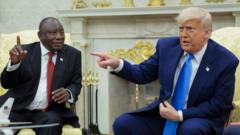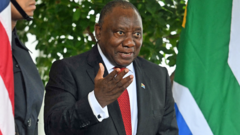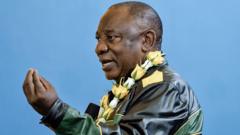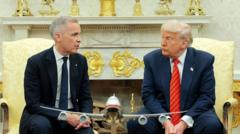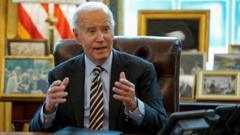As President Trump outlines plans for the 'Golden Dome' missile defense system to counter evolving threats from global powers, experts weigh in on its necessary components and potential costs. Existing systems may not suffice against advanced weaponry, leading to a complex and expensive proposition for national security.
Trump’s Vision for the 'Golden Dome': A New Era in Missile Defense

Trump’s Vision for the 'Golden Dome': A New Era in Missile Defense
The proposed 'Golden Dome' aims to fortify the US against advanced missile threats, but feasibility and cost remain major challenges.
In an ambitious announcement, President Donald Trump unveiled his vision for a cutting-edge missile defense initiative dubbed the 'Golden Dome.' This upcoming system is designed to counteract increasingly sophisticated missile threats posed by nations like Russia and China, featuring interceptors capable of addressing multiple types of threats, including both hypersonic and space-based missile systems.
With the potential for a catastrophic electromagnetic pulse (EMP) event devastating the U.S. infrastructure, experts emphasize the urgency for an upgraded defense approach. "What we face is not merely a return to earlier technological confines, but a real risk of societal collapse," cautioned William Fortschen, a prominent defense analyst.
Trump's proposed Golden Dome aims to improve upon current systems, primarily built to defend against traditional intercontinental ballistic missiles (ICBMs), by integrating advanced detection and defense mechanisms on land, sea, and in space. Despite general consensus on the necessity for enhanced defenses, the project's extensive resources, initially pegged at $175 billion, clash with Congressional estimates that suggest upwards of $542 billion—raising questions on budgetary feasibilities.
Missile defense specialists, including Patrycja Bazylczyk from the Center for Strategic and International Studies, argue that while the Golden Dome concept pivots U.S. defense policy to address modern threats, realizing such a comprehensive system will pose significant logistical challenges. The complexity lies in developing a command and control infrastructure that seamlessly coordinates various defense platforms against a range of threats.
Drawing comparisons to Israel's Iron Dome, which specializes in short-range threats, the Golden Dome will extend its focus to long-range missile capabilities. The proposed system's layered defense strategy could reshape U.S. military engagements and deterrence dynamics on a global scale. Yet, hastily assembling such an advanced project could trigger technological shortcomings, raising concern among experts for its potential to incite an arms race.
In a cautious yet hopeful tone, defense analysts like Dr. Stacie Pettyjohn highlight that while the endeavor faces numerous hurdles, even partial success could serve as a critical deterrent against potential aggressors. With time running short, Trump’s Golden Dome may represent more than just a defense system; it symbolizes a crucial turning point in securing the nation's safety in an unpredictable geopolitical landscape.

